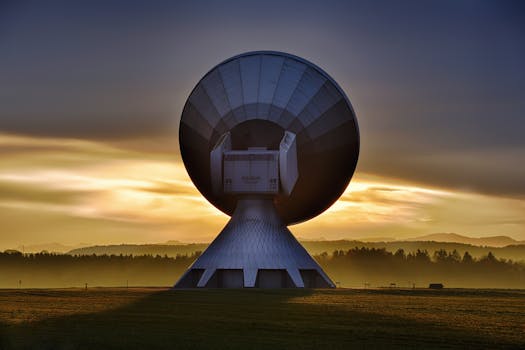
2023 in Review: Major Milestones in Satellite Telecommunications Technology
Satellite Telecommunications
The year 2023 has been a significant one for the satellite telecommunications industry, with several major milestones achieved in the development and deployment of satellite constellations, 5G integration, and satellite-based broadband services. Satellite telecommunications technology has been rapidly advancing in recent years, with significant investments being made in the development of new satellite constellations, such as OneWeb, Starlink, and Amazon’s Kuiper Systems. These constellations are designed to provide high-speed, low-latency broadband services to remote and underserved communities around the world.
One of the major milestones achieved in 2023 was the launch of the first batch of satellites for the OneWeb constellation. OneWeb aims to provide global broadband coverage by 2025, with a constellation of 648 satellites in low Earth orbit. The company has already launched over 200 satellites and plans to launch the remaining satellites in the coming years.
Another significant development in 2023 was the integration of 5G technology with satellite telecommunications. Several companies, including Ericsson and Nokia, have been working on developing 5G-enabled satellite systems that can provide high-speed, low-latency connectivity to remote areas. This integration is expected to revolutionize the way we communicate and access data, particularly in areas where traditional fiber-optic connectivity is not available.
Advances in Satellite-Based Broadband Services
Satellite-based broadband services have also seen significant advances in 2023. Companies such as Hughes Network Systems and Viasat have been launching new satellite-based broadband services, offering faster speeds and lower latency than traditional satellite internet services. These services are designed to provide connectivity to remote and underserved communities, as well as to support the growing demand for broadband services in areas where traditional fiber-optic connectivity is not available.
In addition to these developments, 2023 has also seen significant investments in the development of new satellite technologies, including phased array antennas and advanced propulsion systems. These technologies are expected to play a critical role in the development of next-generation satellite constellations and the provision of high-speed, low-latency broadband services.
Regulatory Developments
The regulatory environment for satellite telecommunications has also seen significant developments in 2023. The Federal Communications Commission (FCC) has been working to develop new regulations for the deployment of satellite constellations, including rules for the use of spectrum and the prevention of interference with other satellite systems.
The European Space Agency (ESA) has also been working on developing new regulations for the deployment of satellite constellations in Europe. The ESA has established a new set of guidelines for the deployment of satellite constellations, including rules for the use of spectrum and the prevention of interference with other satellite systems.
Conclusion
In conclusion, 2023 has been a significant year for the satellite telecommunications industry, with major milestones achieved in the development and deployment of satellite constellations, 5G integration, and satellite-based broadband services. As the industry continues to evolve and grow, we can expect to see even more exciting developments in the years to come. With the increasing demand for high-speed, low-latency broadband services, satellite telecommunications technology is poised to play a critical role in meeting this demand, particularly in areas where traditional fiber-optic connectivity is not available.
